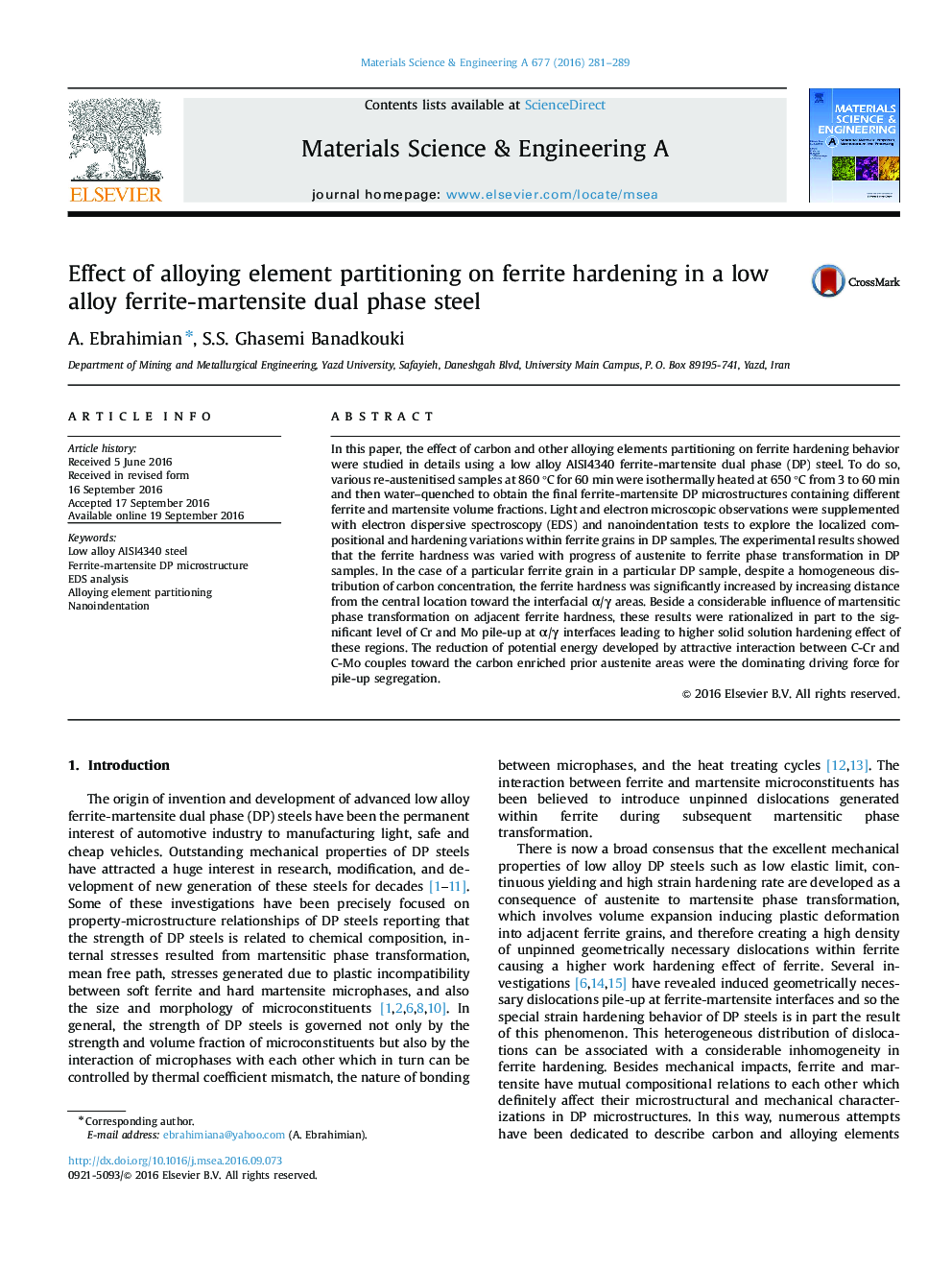| Article ID | Journal | Published Year | Pages | File Type |
|---|---|---|---|---|
| 5456675 | Materials Science and Engineering: A | 2016 | 9 Pages |
Abstract
In this paper, the effect of carbon and other alloying elements partitioning on ferrite hardening behavior were studied in details using a low alloy AISI4340 ferrite-martensite dual phase (DP) steel. To do so, various re-austenitised samples at 860 °C for 60 min were isothermally heated at 650 °C from 3 to 60 min and then water-quenched to obtain the final ferrite-martensite DP microstructures containing different ferrite and martensite volume fractions. Light and electron microscopic observations were supplemented with electron dispersive spectroscopy (EDS) and nanoindentation tests to explore the localized compositional and hardening variations within ferrite grains in DP samples. The experimental results showed that the ferrite hardness was varied with progress of austenite to ferrite phase transformation in DP samples. In the case of a particular ferrite grain in a particular DP sample, despite a homogeneous distribution of carbon concentration, the ferrite hardness was significantly increased by increasing distance from the central location toward the interfacial α/γ areas. Beside a considerable influence of martensitic phase transformation on adjacent ferrite hardness, these results were rationalized in part to the significant level of Cr and Mo pile-up at α/γ interfaces leading to higher solid solution hardening effect of these regions. The reduction of potential energy developed by attractive interaction between C-Cr and C-Mo couples toward the carbon enriched prior austenite areas were the dominating driving force for pile-up segregation.
Keywords
Related Topics
Physical Sciences and Engineering
Materials Science
Materials Science (General)
Authors
A. Ebrahimian, S.S. Ghasemi Banadkouki,
